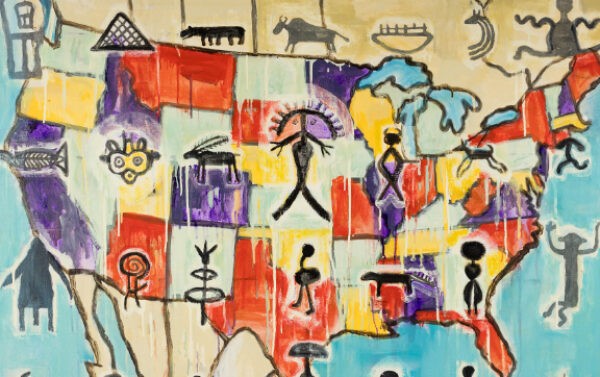"Native Lands brings a much-needed cultural approach to Indigenous territorial studies. Demonstrating a confident cross-disciplinary methodology, Shari M. Huhndorf deftly weaves together literary and visual studies in a series of interlocking analyses of individual works. The readings are theoretically informed, lively, and clear."—Shamoon Zamir, author of The Gift of the Face
"Native Lands represents a superb contribution to Indigenous visual and literary studies. Examining the fraught relationship between Indigenous culture and settler colonialism, Huhndorf deploys iconographic imagery associated with European Indigenous dispossession to show how Indigenous artists Kent Monkman, Rebecca Belmore, Erica Lord, and Heather Campbell contest the gendered dimensions of Indigenous loss. Its catalog of images makes this book essential reading for scholars interested in exploring how visual culture intersects with law, literature, and film, and the accompanying rich analysis discloses the cultural-colonial axis of representation through which visual culture participates in alternative forms of Indigenous cultural expression. Native Lands represents an elegant, insightful, and ambitious contribution to Indigenous interdisciplinary studies."—Cheryl Suzack, author of Indigenous Women's Writing and the Cultural Study of Law
"Huhndorf's deeply informed Native Lands mounts a compellingly original take on settler colonialism from the perspective of gender, specifically the settler state's reorganization and weaponization of gender roles in Indigenous societies in order to facilitate the genocidal land grabs that constitute the United States and Canada. Central to this weaponization, Huhndorf demonstrates, was and is the transformation of extended kinship culture, in which Native women played a central productive role, into capitalist patriarchy, which marginalized them. Huhndorf makes her argument through acute readings of Native cultural interventions in the form of literature, photography, paintings, and film, interventions that are forms of resistance to an ongoing genocide. Native Lands is essential reading in the critical canon of American studies."—Eric Cheyfitz, author of The Disinformation Age: The Collapse of Liberal Democracy in the United States
"This is the book I have been waiting for. The ubiquitous use of #LandBack and #MMIW in popular culture has all but stripped them of their context, complexity, and possibility to effect meaningful change. Huhndorf's complex analysis of a 'new archive' of Indigenous art and literature demonstrates that Indigenous land-based movements are not and cannot be separated from women's bodies and gender justice. She skillfully restores meaning, offers keen new insights, and powerfully raises the stakes of our discussion and our actions."—Amanda Cobb-Greetham, author of Listening to Our Grandmothers' Stories

